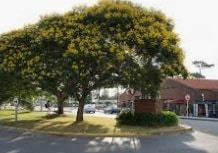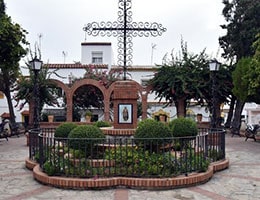 A plaza is a small square . It is a public space that is generally found in groves and gardens.
A plaza is a small square . It is a public space that is generally found in groves and gardens.
The small squares allow the use of certain small surfaces that become areas suitable for resting , playing sports or enjoying cultural activities . Sometimes the small squares also have a symbolic purpose since they serve to remember important events from the past or pay tribute to personalities through monuments, sculptures, plaques, etc.
A square, in short, is a place for public use that revalues territories shared and frequented by citizens. They can help organize vehicular traffic if they function as roundabouts and minimize acts of vandalism in places surrounding a train station, to mention two possibilities.
A small square can also contribute to the environment due to its plant species and by allowing the infiltration of water from precipitation. By having benches and tables they encourage community activities.
Children's games transform the small squares into meeting points for children thanks to their slides , hammocks and other elements. Adults, for their part, can enjoy entertainment alternatives such as chess and dominoes .
The City of Buenos Aires , for example, is a town that has multiple small squares. The Crisolucion Larralde square , in the Caballito neighborhood, is one of them. Features games and an art mural. The Jorge Williams square , the Monte Ararat square and the Alfonso Castelao square are also located in the Argentine capital.
 This concept leads us to the inevitable need to compare it with that of plaza, since for many people they can be confusing. As in any component of the organization of a city , these are two elements that were meticulously designed, following precise rules that the authorities must comply with when creating them and that we can take advantage of to differentiate them. In short, we can say that the plaza is larger than the small square.
This concept leads us to the inevitable need to compare it with that of plaza, since for many people they can be confusing. As in any component of the organization of a city , these are two elements that were meticulously designed, following precise rules that the authorities must comply with when creating them and that we can take advantage of to differentiate them. In short, we can say that the plaza is larger than the small square.
If we delve deeper into the particularities of this difference in size, we must point out that the plaza is an open space whose dimensions are equivalent to those of an entire block, while the small square must occupy half of it. Added to this is the concept of square , little used in everyday speech, whose surface area should be the equivalent of a quarter of a block. These technicalities are not always taken into account in colloquial language, where the first two terms are often used interchangeably, but it is necessary to know them to speak correctly.
For this reason, saying plaza instead of plazaleta in the context of an informal conversation with a friend does not constitute an important or serious error, but it may be less acceptable in a journalistic article. Similar things happen with words such as playa and playón , whose technical definitions are not public knowledge and that is why it is common for us to confuse them when speaking.
Let's see this difference in the seriousness of the communication through a simple example: Juan tells Clara that "yesterday he was in the square where they met Marcos"; If it were technically a small square, it would not be relevant to them, since they both know the place and, after all, a small square is itself a type of square, albeit a smaller one. On the other hand, if in a newspaper article we read that it is not recommended to walk through "Plaza Acosta" in the afternoons because the wave of crimes in the area has increased, and in reality it was "Plazoleta Acosta", this confusion could put ne risk to readers.
